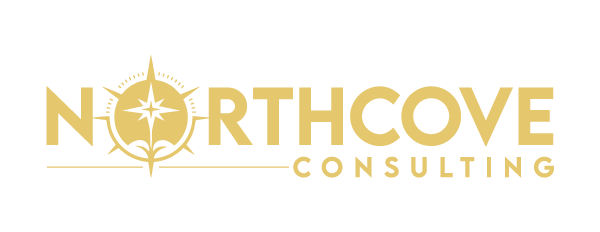
Step by Step Guide to Implementing a Talent Management Framework in Your Company
In the competitive business environment today, an effectively designed talent management framework is paramount to attracting, developing, and retaining the best talent. Partnering with an hr management consulting company can get you up and running with the proper expert guidance and customized solutions. This process-oriented approach will guide you through each phase, enabling you to build a scalable and sustainable system that aligns with your long-term organizational goals.
“According to Deloitte’s 2024 Global Human Capital Trends report, 74% of the respondents note the need for more effective measurement of worker performance in addition to traditional measures. However, a mere 17% of companies indicate being extremely effective at gauging the actual value produced by their workers.” Medium
Understand Your Organizational Needs
Before developing your talent management framework, conduct a thorough needs assessment. Review current workforce demographics, skill gaps, and expected future growth. Interview influential stakeholders, HR leaders, departmental heads, and employees to reflect various perspectives. Use surveys and focus groups to develop key competencies maps. Taking this starting point step will ensure your approach is connected to strategic business objectives and addresses genuine pain points.
For instance, if your organization is growing quickly, you would need to invest more in onboarding and leadership training. Organizations with high turnover, however, would invest more in employee engagement programs and retention strategies.
Define Clear Objectives and Metrics
Having needs identified, specify clear goals for your talent management plan. Should you restrict turnover, build leadership pipelines, or drive diversity? Develop SMART (Specific, Measurable, Achievable, Relevant, Time-bound) goals and their resulting KPIs.
Common Talent Management Metrics
Metric | Description |
Time-to-Fill | Average number of days to hire a candidate |
Internal Promotion Rate | Percentage of roles filled internally |
Retention Rate | Percentage of employees staying over a set period |
Employee Engagement Score | Average score from engagement surveys |
Training ROI | Return on investment from employee development programs |
A data-driven approach allows you to track progress and make adjustments on time. Periodic monitoring also enables data-driven decision-making and proves the value HR brings to strategic planning.
Map the Talent Management Process Steps
Outline your talent management steps from recruitment to succession planning. Typical stages include:
- Attraction & Recruitment: Develop better employer branding and streamlined application processes.
- Onboarding & Integration: Offer official orientations, buddy systems, and early-career initiatives.
- Learning & Development: Deliver tailored training, mentoring, e-learning platforms, and leadership schemes.
- Performance Management: Install continuous feedback cycles, SMART objectives, and 360° appraisals.
- Succession Planning: Recruit high-potential leadership-ready talent, diagnose leadership-readiness, and define career development paths.
- Retention & Engagement: Engage a culture of recognition, flexibility, health and wellness, and career growth.
Every step is a foundation of your end-to-end talent management system, helping to align people strategies with business outcomes.
Build an Integrated Talent Management Framework
An integrated talent management system forms a seamless collaboration between HR functions and business units. Utilize technology, student information systems (SIS), HRIS platforms, and analytics dashboards to automate data and workflows. Integration eliminates administrative silos, accelerates decision-making, and enhances the overall employee experience.
SHRM estimates that organizations integrating talent management systems experience a 25% increase in operational effectiveness and a 30% rise in employee engagement. If HR, learning, and performance tools align, you experience a 360° view of talent dynamics and can address gaps ahead of time.
Pro Tip: To create a robust, integrated system, consider having modules for recruitment, onboarding, learning, performance, and succession management all within a single, integrated system.
Implement Strategic Talent Management Models
Select strategic talent management frameworks that match your organizational scale and culture. Popular models include:
- 9-Box Grid: Categorizes employees based on performance and potential.
- Talent Pipeline Model: Aligning internal talent with future leadership needs.
- Competency-Based Model: Emphasizes the alignment of competencies with roles and business strategy.
Piloting these models in certain departments enables you to test processes prior to a full rollout. Involving managers in interpreting the models ensures accountability and proper use of the models.
Integrate Modern Talent Management Strategies
Implement contemporary talent management practices to remain ahead of changing workforce demands. Adopt agile methodologies, periodic check-ins, project feedback, and iterative development plans. Utilize AI-based tools for bias-free hiring, and deploy microlearning for instant skill-building.
Develop inclusive leadership, psychological safety, and a culture of ongoing learning. Leverage predictive analytics to determine retention risk or development gaps. Don’t overlook using your executive compensation consultants services to align rewards and incentives with strategic objectives. This collaboration keeps your framework up-to-date and ready for the future.
Leverage the Talent Management Lifecycle Framework
The framework for talent management lifecycle offers an end-to-end perspective on employee journeys from hire to retirement. The most significant phases are:
- Recruitment
- Onboarding
- Development
- Engagement
- Performance Review
- Career Mobility
- Exit/Offboarding
Optimize each phase using tools, communication, and leadership enablement. Integrate continuous feedback loops and pulse surveys to measure employee attitudes and sentiments. Integrate employee engagement initiatives at every stage to foster well-being and build commitment.
Adopt Best Practices in Talent Management
Implement these best practices to increase the effectiveness of your talent management framework:
- Data-Driven Decisions: Use analytics for hiring, promotion, and training decisions.
- Culture of Continuous Learning: Offer career growth, mentoring, and reskilling.
- Transparent Communication: Provide career development plans and feedback transparently.
- Compliance & Governance: Ensure compliance by having an HR compliance checklist for small business to reduce risks and enhance compliance.
- Leadership Involvement: Continue to have leadership involvement in talent review and mentorship programs.
- Diversity, Equity & Inclusion (DEI): Embed DEI into your strategy.
Best practices change, so continuous benchmarking against high-performing organizations is required.
Talent Management vs Performance Management
Although commonly confused, talent management and performance management serve distinct purposes.
- Performance Management: Aims at assessing and evaluating past work performance.
- Talent Management: Prioritizes long-term development, leadership development, and workforce planning.
A strong talent management framework combines both systems. Performance data helps in talent planning by identifying gaps in skills, highlighting high performers, and identifying candidates for promotion, which fuels a cycle of ongoing improvement.
Talent Management Framework Examples
Most of the world’s top companies have strong talent management frameworks, driving their HR activities. For instance:
- Google: Leverages data analysis and continuous feedback systems to encourage innovation and leadership development.
- Unilever: Uses the talent pipeline model to ensure leadership succession and career mobility.
- Adobe: Replaced traditional performance reviews with real-time check-ins and development-focused conversations.
These instances demonstrate the adaptability and creativity embedded in successful talent frameworks.
Final Thoughts
Building and implementing a talent management framework is a strategic imperative that fuels growth and staff satisfaction. By walking through these steps, measuring needs, establishing objectives, leveraging technology, and incorporating best practices, you will build a robust system that responds to change.
The outcome? Improved retention, more effective leaders, enhanced productivity, and improved workforce motivation.
Ready to revolutionize your HR practices? Join forces with advisors of consultant firms like Northcove Consulting today and take your talent strategy to new levels!
Book your consultation session by calling consulting specialists at (877) 595-3087 or by emailing [email protected].
Frequently Asked Questions
What is a talent management framework?
A systematic process to attract, develop, retain, and transition employees who are focused on organizational objectives.
How long does it take to implement a framework for talent management?
Implementation durations are disparate but usually are 6-12 months long, depending on organization complexity.
Can small businesses use a framework for talent management?
Yes. Miniature frameworks centered on key modules, hiring, training, and retention work best for small groups.
How do you measure the success of a framework for talent management?
Success is gauged through KPIs such as retention levels, internal promotions, time-to-fill, and staff engagement scores.
Is technology necessary for a talent management framework?
Although not required, using HRIS and analytics platforms simplifies processes and offers actionable information.
Related Posts
How Compensation Benchmarking Tools Help HR Make Data Driven Pay Decisions
How Compensation Benchmarking Tools Help HR Make Data Driven Pay Decisions Today’s changing work environment…
Employee Handbook Best Practices Every Small Business Should Follow
Employee Handbook Best Practices Every Small Business Should Follow An HR management consulting company recognizes…
How an Interim Total Rewards Consultant Can Optimize Your Compensation Strategy Fast
How an Interim Total Rewards Consultant Can Optimize Your Compensation Strategy Fast When companies face…
How to Build Effective Total Rewards Communication Strategies That Employees Understand
How to Build Effective Total Rewards Communication Strategies That Employees Understand Employees want to feel…






